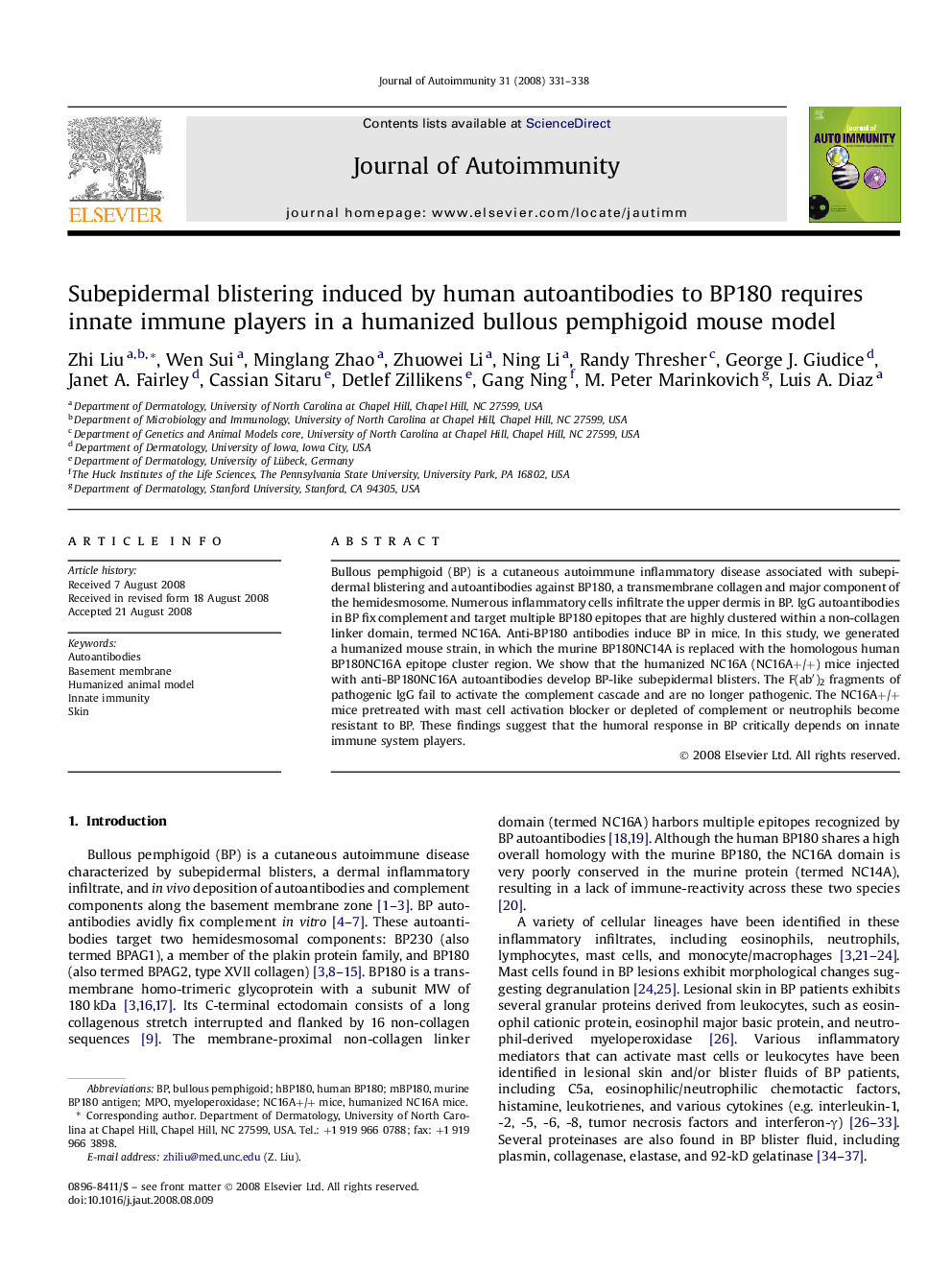| Article ID | Journal | Published Year | Pages | File Type |
|---|---|---|---|---|
| 3368136 | Journal of Autoimmunity | 2008 | 8 Pages |
Bullous pemphigoid (BP) is a cutaneous autoimmune inflammatory disease associated with subepidermal blistering and autoantibodies against BP180, a transmembrane collagen and major component of the hemidesmosome. Numerous inflammatory cells infiltrate the upper dermis in BP. IgG autoantibodies in BP fix complement and target multiple BP180 epitopes that are highly clustered within a non-collagen linker domain, termed NC16A. Anti-BP180 antibodies induce BP in mice. In this study, we generated a humanized mouse strain, in which the murine BP180NC14A is replaced with the homologous human BP180NC16A epitope cluster region. We show that the humanized NC16A (NC16A+/+) mice injected with anti-BP180NC16A autoantibodies develop BP-like subepidermal blisters. The F(ab′)2 fragments of pathogenic IgG fail to activate the complement cascade and are no longer pathogenic. The NC16A+/+ mice pretreated with mast cell activation blocker or depleted of complement or neutrophils become resistant to BP. These findings suggest that the humoral response in BP critically depends on innate immune system players.
